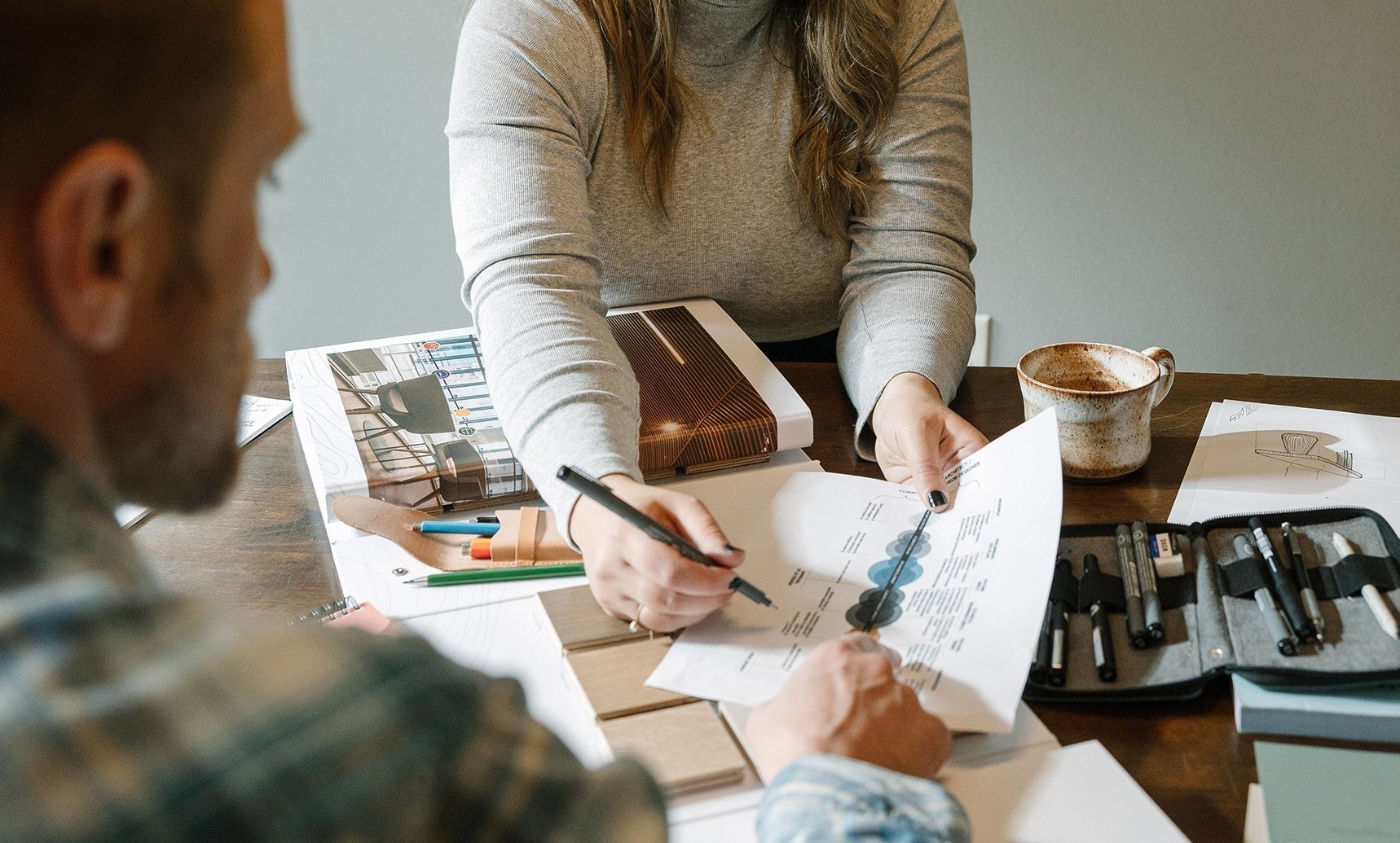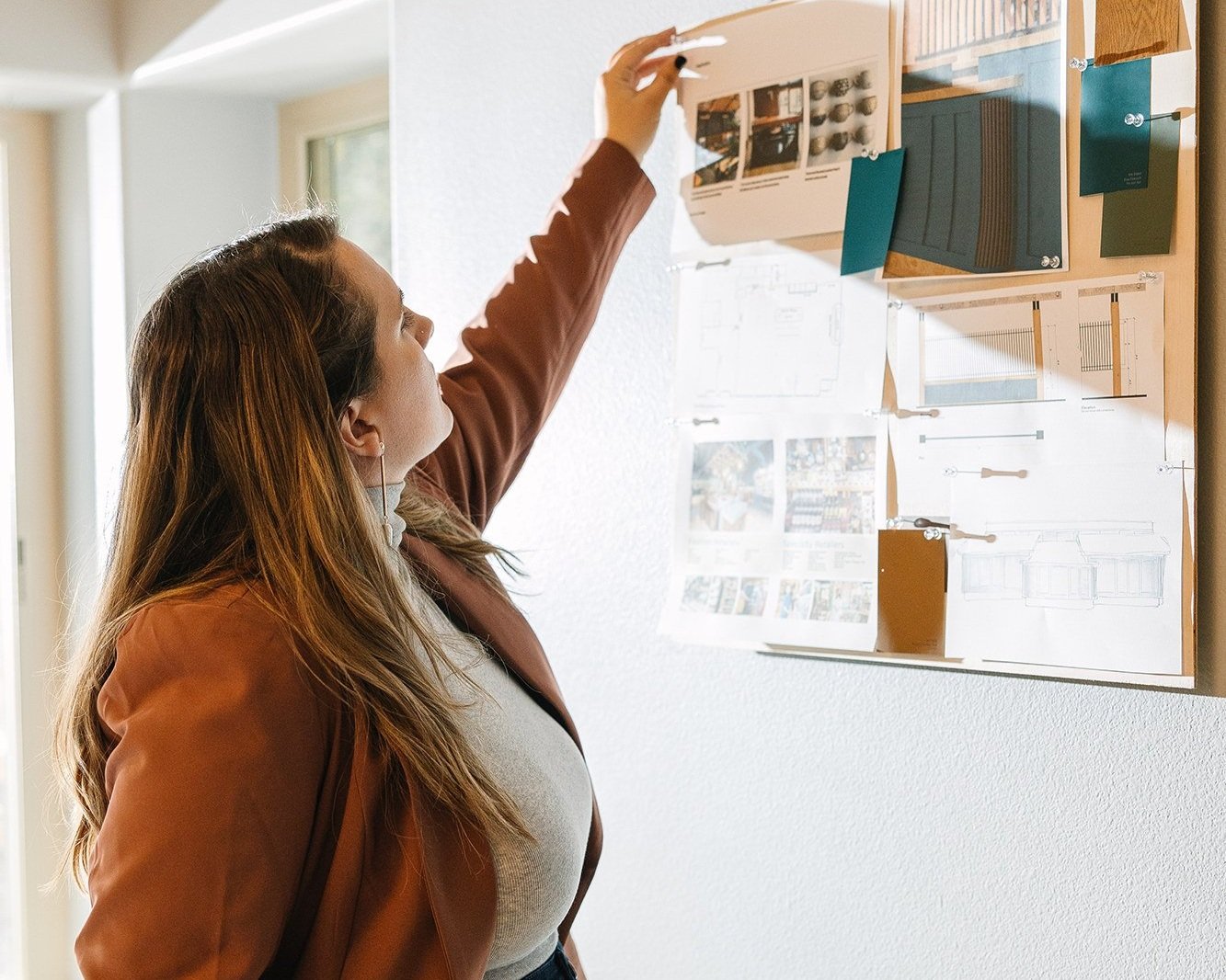Articles
7 Creative Ideas for Retail Stores that won’t break the bank.
In this guide, our designers have compiled our best creative ideas for retail stores that won’t break the bank for your next store opening or refresh.
Opening a new retail space or deciding to do an entire store refresh can easily become a large investment. Contractors will be hired, associates may put in overtime, and the store will not be making revenue during construction days. But when it’s finished, your customers will purchase more high-ticket items, come back more often, and recommend your shop to others. The investment will be worth every penny, that is if you spend your pennies wisely. We have compiled our best creative ideas for retail stores that won’t break the bank for your next store opening or refresh.
1. Level Up your Street Appeal
Every store owner knows half the battle is getting customers to walk in the door. Street appeal refers to how likely someone passing by will come into your shop. Street appeal is all about telling a compelling story about your shop to get people interested enough to come inside. To level up your street appeal make all signage easy to read and update window displays to tell a seasonally appropriate story. Signage and displays should be intuitive to what is being sold inside. If someone is confused about what is being sold inside a store, they will likely pass it up. Potential customers are also more likely to enter stores that have in-season displays as it shows there is fresh inventory and items that they need right now.
2. Be Mindful that Less is Always More
People love having options until they have too many options. Too much product creates an unpleasant shopping experience and overwhelms customers. Many retailers make the mistake of thinking that they have to be constantly selling and pushing products, but this leads to an excessive amount of decision-making and fatigue.
Instead of stuffing products everywhere, allow for moments of pause and storytelling in your space. This will help your customers focus on one item at a time and feel a sense of calm while inside your retail space. Your store will transform from overwhelming to a story your customer can connect with.
3. Make your Small Space Feel Bigger
It can be hard to make your retail store welcoming when you are working with smaller or awkward spaces. Luckily our designers have some tricks up our sleeves. Does your store lack physical space? Use large mirrors to create the illusion of more space. Do customers never make it past the front half of the store? Add color at the back of your store to elongate the space and pull users further in. Do you have low ceilings? Use low-height floor fixtures and concentrate your product on the perimeter walls.
4. Create an Easy to Follow Journey
If your store doesn’t have intuitive movement users may feel awkward and leave before finding something they would like to purchase. One of the easiest ways to have an intuitive journey is by keeping circulation paths clear and open. Then break up long rows of fixtures or overwhelming amounts of product with bright colors, graphics, and imagery. Lastly, group floor fixtures into islands to create intentional product stories with cross-merchandising.
5. Maximize your natural light
Natural light makes spaces feel inviting and pleasant to the user. Customers will linger longer and make more purchases in stores that maximize natural light. Take advantage of light by moving tall fixtures to the back of the store to not block any windows.
6. Save Space for Seating
More retailers are adding community and seating spaces to their stores. This encourages people to hang out in your space which gives them a moment of pause. Many brands use seating spaces as an opportunity to share a story about the company making the brand more authentic. Seating spaces allow retailers space to host events which brings us to our next point.
7. Connect with your Local Community
Make your store a part of the community through connections to foster customer loyalty and repeat business. Having a seating area allows spaces to expand to holding community engagement events after hours. Add photographs of the surrounding landscape and support local photographers. Sell art from local artists to show you care about putting money back into the community. Hire a local artist to decorate your storefront during holidays and local events.
Looking for more Creative Ideas for Retail Stores?
Feels on Brand is a boutique, women-owned retail experience studio, that is passionate about interior design and authentic brand-driven storytelling. We have been trusted by big brands including Patagonia, Arc’teryx, Adidas, Garmin, and Nike to create unforgettable retail spaces. If you are ready to elevate your retail experience for your customers, you’ve come to the right place. Follow us on Instagram and Facebook for more tips and tricks.
6 Ways a Retail Store Designer will Save you Money on your Next Store Opening
Wondering if hiring an expert is right for you? Retail store designers help create shopping experiences that are truly representative of your brand and leave lasting impressions that build trust and entice customers to keep coming back. Not only will they help you save money when first opening your store, their designs and expertise will help you sell more products and keep customers coming back!
1. A Retail Store Designer works with the Current Architecture
Most retailers don’t have the option of building a brand new store from the ground up with their brand and vision being the driving force behind the entire build. Instead brands find a space that fits other parameters such as location or price, and have to make the space work for them. In many cases owners will find themselves dreaming of costly remodels to make the space fit their vision. Retail store designers do the opposite. We find inspiration in the current architecture to create your dream space, saving you from costly and unnecessary remodels.
2. Designers are Trained Resource and Material Experts
There are hundreds of thousands of different options for anything a new retail space might need. From flooring to light fixtures, just trying to decide on one item will make your head spin. Retail store designers are versed in these materials and can quickly guide you towards durable materials that can withstand the normal wear and tear of a retail store.
Not only do designers understand which materials to pick, they also know how to stay on budget throughout the entire project. Designers know where to cut costs and when to spend a little extra to get the best quality. Staying on budget also has a lot of due with the contractors and fabricators you will need to hire to finish your project. We will help you communicate designs clearly so that you aren’t stuck with the bill of fixing mistakes that are often costly and will destroy any budget.
3. Your Products will Sell at a Higher Price Point
Did you know a poorly designed space negatively impacts sales? Unlike traditional interior designers, a retail store designer is trained in sales psychology, the customer journey, and how people interact with products. Designers will take into account your highest and lowest performing items and showcase them in a way that will help increase sales. Retail spaces that lack well executed designs struggle selling quality products as customers will not believe products are high-end or worth the price-point. Simply hiring a retail store designer to help you create your retail space will help you achieve sales goals and foster customer loyalty.
4. Designers Plan for the Future
Retail store designers are not just creating a plan that will work for the day your store opens, but for the entire life of the store. We will help you choose a fixture system that is interchangeable for changing seasons and merchandise. Designers not only look at the products you are currently selling, but ahead to what you may want to add to your product line in the future making sure you won’t have to spend money on a whole new system every time you want to carry new products. This way your store is flexible for any changes in customer preferences and will always maintain relevance.
5. Retail Store Designers Help Reduce Operating Costs
When you hire a retail store designer, they will create a store layout with maximum efficiency in mind. Sales staff, product, and the customer journey are all taken into account. Your design will come with a plan on how to best station sales associates for maximum visibility of fitting rooms, cash desk, entrance, etc. You will also receive plans on where to place specific products and best practices for rotating inventory giving your staff a clear direction every time you want to display something new or switch things up!
6. You Won’t Have to Hire an Outside Graphic Designer
Along with being an interior designer, retail store designers are also versed in custom signage creation. This usually includes storefront signage, branded graphic displays, product wayfinding, window displays, and anything else your store might need. Since designers look to the future, they will help you create a plan for signage changes for each season to keep your store always fresh and exciting for new and repeat customers alike.
Ready to Become Unforgettable?
Feels on Brand is a boutique, women-owned retail experience studio, that is passionate about interior design and authentic brand-driven storytelling. We have been trusted by big brands including Patagonia, Arc’teryx, Adidas, Garmin, and Nike to create unforgettable retail spaces. If you are ready to elevate your retail experience for your customers, you’ve come to the right place. Schedule a call or send us a note to start the process of becoming unforgettable.
5 Essential Strategies to Foster Customer Loyalty and Repeat Business for Small Retailers
In the competitive world of retail, small businesses often find that their physical retail stores' survival hinges on their capacity to establish a loyal customer base.
The secret to cultivating this kind of loyalty lies in creating shopping experiences that are truly representative of your brand and leave lasting impressions that build trust and entice customers to keep coming back.
In the competitive world of retail, small businesses often find that their physical retail stores' survival hinges on their capacity to establish a loyal customer base.
The secret to cultivating this kind of loyalty lies in creating shopping experiences that are truly representative of your brand and leave lasting impressions that build trust and entice customers to keep coming back.
1. Creating an Authentic Retail Experience
Creating an authentic customer experience for your small business means keeping things real at every touchpoint. Store materials, storytelling, everything should speak to your brand and appeal to your audience. Take, for example, a brand with a focus on sustainability. Using eco-friendly materials and showcasing your commitment to the planet will give your customers a genuinely authentic experience.
A great example of this is Patagonia. This brand is all about environmental sustainability, and it shows. With initiatives like their Worn Wear program, they make their dedication to minimizing their impact on the environment present in their customer's shopping experience.
When you walk into a Patagonia store, their commitment to the environment is immediately apparent. From the construction of the store to the product displays, everything is made from recycled and sustainably sourced materials. When shopping becomes a chance to make an impact, it resonates with their customers.
Authenticity doesn't just make your brand feel trustworthy; it sets the stage for a long-term relationship with your customers.
2. Building a Community Around Your Brand
Taking a community-centric approach, hosting localized events, exhibiting local artists' works, and tailoring your brand's message to the local audience can immensely boost your brand's significance. Actively engaging with the community not only cultivates trust and respect but also provides your brand with a unique identity that resonates with your audience.
Consider Oiselle, the women’s outdoor clothing brand, known for its commitment to make great product, improve the sport, and build the sisterhood. The brand lives this out through its Seattle Flagship store where they invite the local community to join in a weekly run through the “Thursday Night Flight Club”. Far from only being a place to purchase gear, this store functions as a community hub.
How else might a small business owner easily introduce community engagement? Never underestimate the power of imagery and messaging that is catered to your local audience.
3. Nurturing a Purpose-driven Audience
Having a clearly communicated purpose creates a compelling story that resonates with customers, demonstrating that your business isn’t solely about making profits, but making a positive impact. This might involve supporting environmental sustainability, championing social causes, or advocating for meaningful change in your industry.
Title Nine sets itself apart with its dedication to living its purpose of women being” Fit to run, fit to lead, fit to win” by uplifting small businesses run by women in its T9 Movers & Makers program, and providing financial support through its T9 Fund.
REI, the renowned outdoor and recreational gear supplier, emphasizes its commitment to environmental conservation through many different outlets. One of their prominent initiatives, the OptOutside campaign, encourages customers to avoid the consumerist Black Friday rush, and instead immerse themselves in nature during this day. This step not only solidifies REI's brand authenticity but also aligns with the values of its customer base.
Your purpose is an integral part of your retail journey and often a missed educational opportunity. Your customers want to hear why you are in business and the positive impact you are making in the world. This makes them feel emotionally invested in your journey and become loyal advocates for your brand, compelling them to return again and again.
4. Crafting Unexpected Retail Moments
Enhancing the customer journey with unexpected visual elements can lead to deep and memorable experiences. These aspects could be as straightforward as unique visuals in uncommon places or as detailed as interactive installations, all building joyful associations with your brand.
Arc'teryx, the premium outdoor brand has mastered the art of the 'unexpected retail experience'. Everywhere you look, their ethos of 'Design with intent, and build for purpose' is vibrantly exhibited. From avant-garde designs reflecting their futuristic products to displays demonstrating their love of nature, it's full of striking and unexpected elements.
Not all retailers are are bold as Arc'teryx, but this strategy can still be used at a smaller scale and speak to your audience. Remember that an unexpected splash of creativity can go a very long way in impressing your customers. Surprising elements that spark joy and intrigue can build positive associations with your brand, providing a compelling reason for them to return.
5. Implementing Intuitive Wayfinding
Finally, an intuitive layout in a retail store enhances the customer experience. Navigating your store should never be a hassle for your customers. Aim for an intuitive, easy-to-use layout that allows them to find what they're looking for quickly and efficiently. This not only makes the buying process more seamless but also emphasizes a sense of customer care and attention to detail.
Backcountry, an outdoor retailer that was once online only, has recently expanded to nine brick-and-mortar locations, including their first California flagship store where they use intuitive wayfinding to guide visitors through their large 23,000 sqft space with minimal signage.
Guiding your customers intuitively through their shopping can drastically enhance their retail experience without excessive signage. This strategy not only controls their ride but also nudges them subtly toward purchasing decisions
Building Trust and Loyalty in Retail
When searching for a retail experience design specialist, inquire about their strategies for fostering customer loyalty and encouraging repeated business.
Understanding the Role of Retail Experience Designers
While the job of an interior designer might be familiar to most, in the context of retail design, there exist specialized professionals known as Retail Experience Designers.
As you weigh the decision of whether to enlist the services of a retail experience designer for your company, it's crucial to recognize that their responsibilities extend far beyond simply crafting visual appeal.
While the job of an interior designer might be familiar to most, in the context of retail design, there exist specialized professionals known as Retail Experience Designers.
As you weigh the decision of whether to enlist the services of a retail experience designer for your company, it's crucial to recognize that their responsibilities extend far beyond simply crafting visual appeal. Their primary role is to curate an unforgettable, engaging customer journey by aligning every aspect of your store, be it the store layout, signage, or storytelling, to reflect your distinctive brand identity.
A crucial part of the retail experience designer's role is leveraging consumer psychology and strategy and understanding how different design elements can influence shopping behavior. For instance, the right storytelling can evoke certain emotions, thoughtful product placement can encourage sales, and intuitive navigation can make shopping a more enjoyable experience.
Collaborating with a retail experience designer will allow you to capitalize on these insights, helping you design a store that doesn't just attract shoppers but also engages them, retains them, and encourages them to advocate for your brand.
Choosing Between an Interior Designer and a Retail Experience Designer
Now that you have a solid understanding of the roles a retail experience designer can fulfill, you may wonder: What separates an interior designer from a retail experience designer? Is one more suitable for your business than the other?
Ultimately, the choice between these designers will depend heavily on the specific requirements of your retail environment. Both professions bring unique perspectives and skills to the table that can elevate a retail space, yet they have distinct areas of focus and expertise.
Interior Designers prioritize aesthetics and spatial functionality. They consider factors such as color schemes, lighting design, choice of materials, and placement of furniture. These professionals take a particular interest in the form and visual appeal of a space. However, their approach may not always delve into the strategy and brand-driven aspects of retail experience design.
On the other hand, Retail Experience Designers specialize in crafting a holistic customer journey. They consider the physical layout, branding, customer interaction points, plus all of the aesthetics an Interior Designer considers. This means their approach is more comprehensive, encompassing a wider range of factors to optimize the entire customer experience.
Creating Emotional Connections in Retail Design
Your retail space effectively serves as a 3D embodiment of your brand identity. It is a tangible representation of your business ethos and is formed by a delicate balance of visual aesthetics, functionality, and optimal space utilization.
Research indicates that the store environment influences up to 50% of the overall retail encounter, affecting customer satisfaction, purchasing behavior, and brand loyalty. Engaging a retail experience designer can guarantee that your store design is not a mere afterthought but, instead, plays a strategic role in your overall business success. They excel in creating an atmosphere that builds emotional connections, prompting customers not just to buy, but to buy into your brand story.
The Impact of a Retail Specialist on Your Brand's Identity
Creating a cohesive retail environment extends beyond choosing the right color scheme, selecting appropriate furniture, and organizing products effectively. Your storefront is, in essence, a material embodiment of your brand's narrative and character. If done correctly, it can be targeted marketing that builds brand loyalty, encourages repeat visits, and triggers consumer engagement.
That's where a Retail Experience Designer, who fuses the strategic understanding of a brand storyteller with the technical skills of an interior designer, comes into play. These professionals pull together multifaceted aspects of your retail space—visual aesthetics, sensory elements, spatial flow, and merchandise presentation—to create a unified, innovative, and inviting commercial environment that reflects your brand identity and core values.
Retail experience designers start by immersing themselves in your brand narrative. As great storytellers, they capture your business’s essence, understanding how to manifest it tangibly within a physical retail environment. They will use your branding materials, including logos, colors, typography, and images, in combination with space design and product display, to provide customers with a seamless and consistent brand experience.
Exploring the benefits of collaboration
Small businesses should also consider the level of collaboration and involvement they desire in the design process. Retail Experience Designers often take a more holistic approach, working closely with the business owners to understand their brand, target audience, and goals. They may involve the business owners in the creativity and decision-making process, ensuring that the final design reflects the business's unique identity. On the other hand, Interior Designers may focus more on executing the design based on the provided specifications. Depending on the business's preference for involvement, they can choose the designer who aligns best with their desired level of collaboration.
Finding the Right Designer for Your Retail Space
If the business aims to create a unique and memorable shopping experience that goes beyond just the physical space, a Retail Experience Designer may be the better choice. Retail experience designers specialize in creating environments that engage customers on multiple levels and often have a broader skill set that extends beyond interior design. They can be particularly beneficial for small businesses needing assistance creating effective product displays, maximizing space utilization, and enhancing the overall customer journey. On the other hand, if the business primarily needs assistance with selecting furniture, lighting, and color schemes, an Interior Designer may be a more suitable choice.















